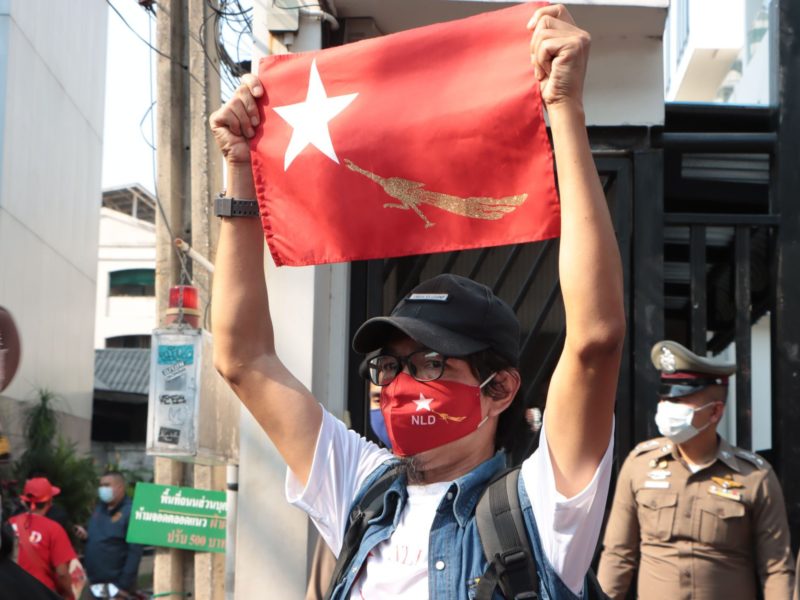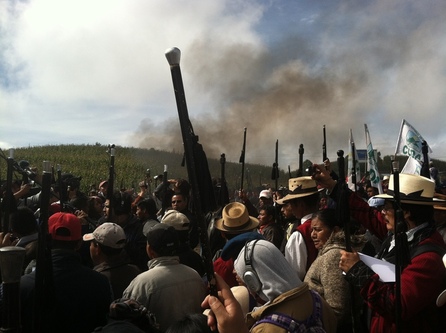Guest post by Kyungmee Kim and Espen Geelmuyden Rød
The aftermath of the coup in Myanmar illustrates how important digital technology has become in the struggle for political power. Social media has fueled nationwide anti-coup protests; the junta has responded with combined online and offline repression. Research shows that autocratic leaders seek control of online information through censorship, disinformation campaigns, and surveillance. At the same time, digital communication is important for democracy activists and protest mobilization.
As the coup derailed Myanmar’s path to democracy, protests rapidly spread to all corners of the country, galvanized by youth leaders (“Generation Z”) and digital technology. The use of social media in protests has been highlighted from Arab Spring uprisings to the Black Lives Matter movement, and recent research shows that digital communication can catalyze protest movements.
But can the Internet help defend Myanmar’s democracy?
Digital Mobilization in Post-Coup Myanmar
Digital technology is being used across Myanmar to resist the coup. Politicians formed a parliament over Zoom, and a first virtual parliamentary session convened on February 4 and formed a committee representing parliament. “We can call for a Hluttaw (local name for parliament) meeting anywhere, anytime, where the committee members are,” said Phyu Phyu Thin, an elected MP.
Social media are also used by activists and protestors who use messaging apps to coordinate the time and location of protests. Says one university graduate in Yangon: “We used to use the Facebook messenger but found out that it is not safe enough.” She and her friends switch between various apps for coordination and information sharing.
Internet access helps spread information across the country. Sharing news of protests and state responses has seemingly created a degree of coordination among an otherwise decentralized movement. Even in remote areas, people are seeing videos and images of protests—and violent crackdowns—on their mobile phones.
The urban-rural divide is evident in protest participation, but information sharing through social media has narrowed the gap with street protests and disruption observed across the country. For instance, a day after the “broke down car” tactic to block critical road connections was reported in Yangon, the same tactic was repeated in Muse, 800 km from Yangon, blocking a crucial China-Myanmar border trade route.
An activist based in the conflict-affected Kachin State explains, “We are watching the situations in Yangon, Nay Pyi Taw, and Mandalay to organize protests here. Everyone knows what is going on.” The situation is a stark contrast to previous uprisings in 1988 and 2007, when people relied on sparse coverage of the events on radio and satellite television.
Countering Digital Mobilization: The Regime’s Response
The military regime moved swiftly to curtail the use of Internet technology for anti-coup mobilization, blocking access to social media platforms such as Facebook and Instagram. When protesters responded by using VPNs (virtual private networks) to access banned social media platforms and migrated to encrypted messaging apps, the regime countered by blocking VPN IP addresses. The regime responses seemed only to delay the growth of protest, as activists found ways around them.
The junta, seemingly surprised by the scale of the anti-coup mobilization, finally responded with a nationwide Internet shutdown on February 6, which only catalyzed protests further. The junta’s most recent digital tactic is a nightly Internet curfew modelled on tactics used in Iraq during the 2019 protests and by repressive regimes worldwide. The junta also amended the Electronic Transactions Law, which bolsters already repressive laws regulating online content that have led to the prosecution of activists and journalists.
Many of these responses appear as brute force censorship. However, as in most autocracies, the digital sphere in Myanmar was already dominated by pro-government content and misinformation campaigns. Digital surveillance regulations and tools are also widespread. All these measures aim to disrupt the information flow between activists and the international community, and to identify and arrest activist leaders.
What Does the Future Hold: Military Dictatorship? Democracy? Escalating Political Violence?
Research does not lend support for the expectation that digital technology fosters democracy. Nonetheless, democracy activists in Myanmar appear strengthened by digital communication. But as time passes and new, extensive restrictions on Internet use are imposed, the junta may regain control. One possibility is that Internet service providers (ISPs) unaffiliated with the junta, such as Norwegian Telenor, will be expelled from the country for expressing concerns about the development. This would solidify the junta’s information monopoly. A reversion to military dictatorship, as was in place before the 2008 constitution, still seems unlikely given the widespread disapproval of the coup and continued protest mobilization.
Another concern is that digitally transmitted information about violence by the junta or protesters once again will set the conflict-ridden country on a violent path. Digital technology can be used to incite violence, as evidenced by the storming of the US Capitol. In Myanmar, nationalists used Facebook and Twitter to spread hate speech and misinformation during the 2017 violence against the Rohingya. Combating such misinformation, by muzzling propaganda accounts, for example, is one way to safeguard against a violent escalation of the conflict.
Kyungmee Kim is a doctoral candidate at the Department of Peace and Conflict Research at Uppsala University. Twitter handle @KittyyKim. Espen Geelmuyden Rød is a researcher at the Department of Peace and Conflict Research at Uppsala University and a Senior Researcher at the Peace Research Institute Oslo. Twitter handle @espen_g_roed.






